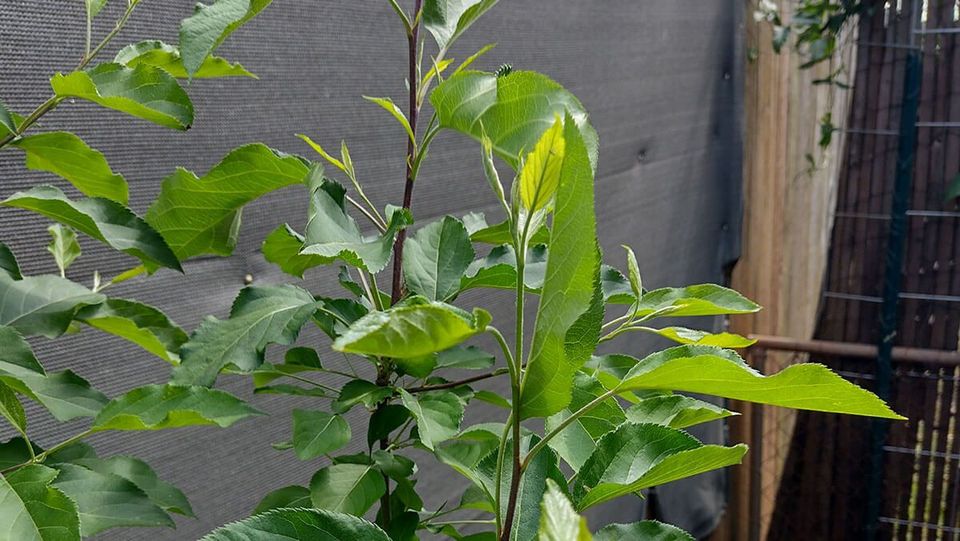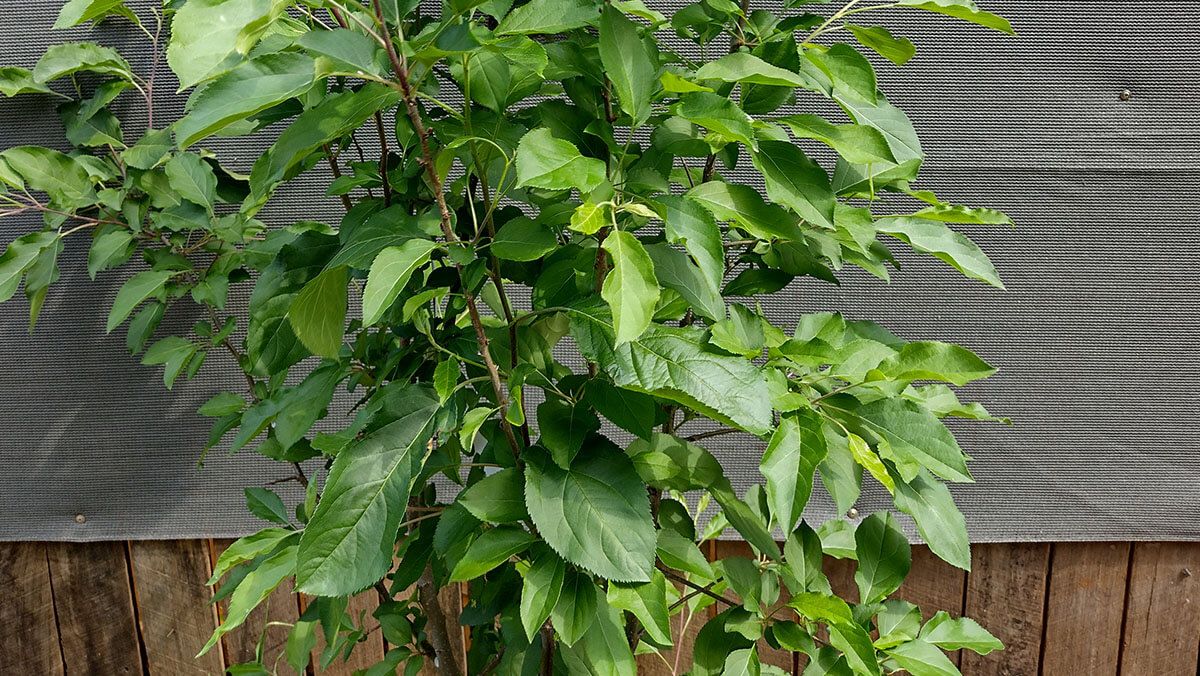Apple: SG-002 (unnamed)

A seedling apple with a very wide growth pattern and high vigour.
- Vigour: High
- Precociousness: Medium
- Resistances: Not susceptible to Powdery Mildew
- Size of fruit: Unknown
- Flowering: Mid-spring
- Fruiting: Unknown
- Cropping: Unknown
- Ploidy: Diploid (likely)
- Fruit colour: Unknown (presumed red with yellow)
- Flesh colour: Unknown (presumed white)
- Leaf colour: Green
- Parentage: Ambrosia x Unknown (open pollinated)
- Descendants: None
- Biennialism: Unknown
- Growth habit: Upright tight (not columnar)
- Self-fertile: Unknown (but unlikely)
Planted by Shane Gadsby (me!) in mid-2018 (Winter), from the seeds collected from a open pollinated commercial Ambrosia apple.
Grown indoors in a small pot until late 2018 (Summer), where they were transferred to 20 litre pots and placed for increasing lengths of time so as to harden off. At the beginning of 2020 they were planted into 50 litre pots where they were grown in a greenhouse until Spring of 2020. Where they were then planted in the ground, in a south facing corner of the yard (70% direct sun per day).
A decision not to remove a water sprout in 2019 led to tree effectively having two trunks, a mistake that was unable to be remedied when the tree was planted in the ground (as it was summer planted, and so less hardy to root changes).
A side effect of this is that the tree need much more vigorous trimming each season to ensure that the limbs do not begin to interfere with each other.
An attempt will be made to separate them in the Winter dormancy of 2023.
In the first year it grew from seedling to around 600mm tall, and the second to a little over 1500mm (1.5 metres) tall, creating very long side branches, with the longest being over a metre, and averaging around 500mm. This is in contrast to the fact that the tree height did continue to increase, but that all branches increased at around the same rate.
In 2021 a scion was taken from the tip of the taller main trunk, and grafted to MM102 rootstock, a dwarf rootstock with decent disease resistances (for Australia), and increased precociousness.
This was in order to speed up maturation and convince the tree to bloom.
By the end of 2021 the tree has not grown flowers, and is less than half way towards the 122 internodes usually required to get the apple to reach maturity, and so may set fruit next season.
In October 2022 the first flowers appeared on the tallest tip of one of the tallest branches (height 3.5 meters), in two clusters, one of 5 buds and one of 2 buds.
I'll be hand pollinating them (probably with a columnar pollen), and seeing what the variety's early traits are.
As of January 2023 there are 2 fruitlets growing, each around 20mm in diameter.
They're still seemingly very immature, so my guess is that this will be a late ripening variety, somewhere around May-June harvest (or they could just end up being small for the first year, or even just a crab apple).
A small thing to note was that the variety did not have leaf hairs on the juvenile/adult vegetative areas, but did grow the hairs from the point it had become adult fruiting, and onwards.

NOTE: I have yet to try this apple directly, having only planted it in 2018, and so only a little information to go on.
This entry will be updated as the tree grows and bears.
UPDATE: As of March 2023 I have now tried it's first fruit, two 30mm diameter apples that were balanced-sweet, low tannin, and quite crispy.